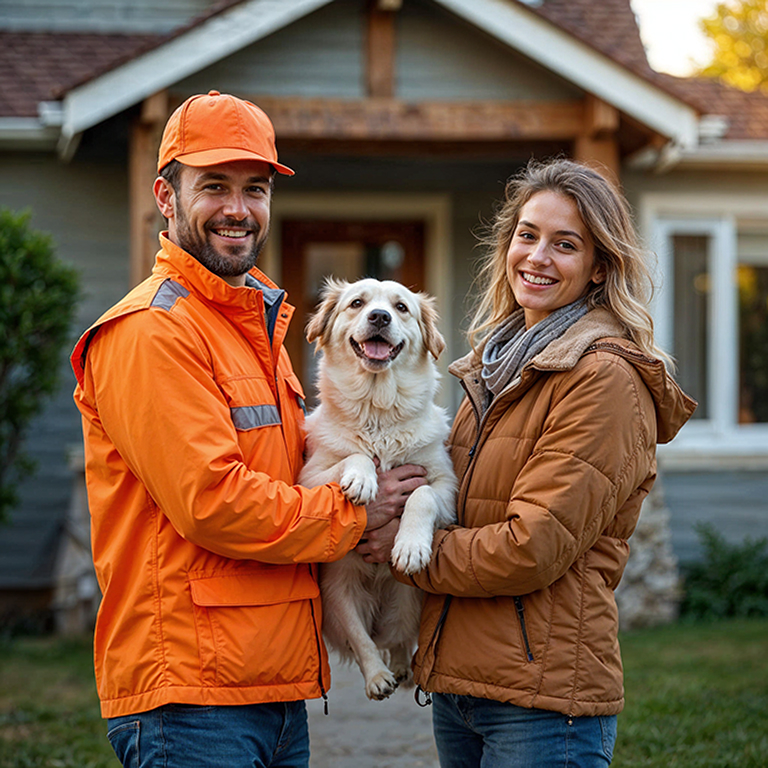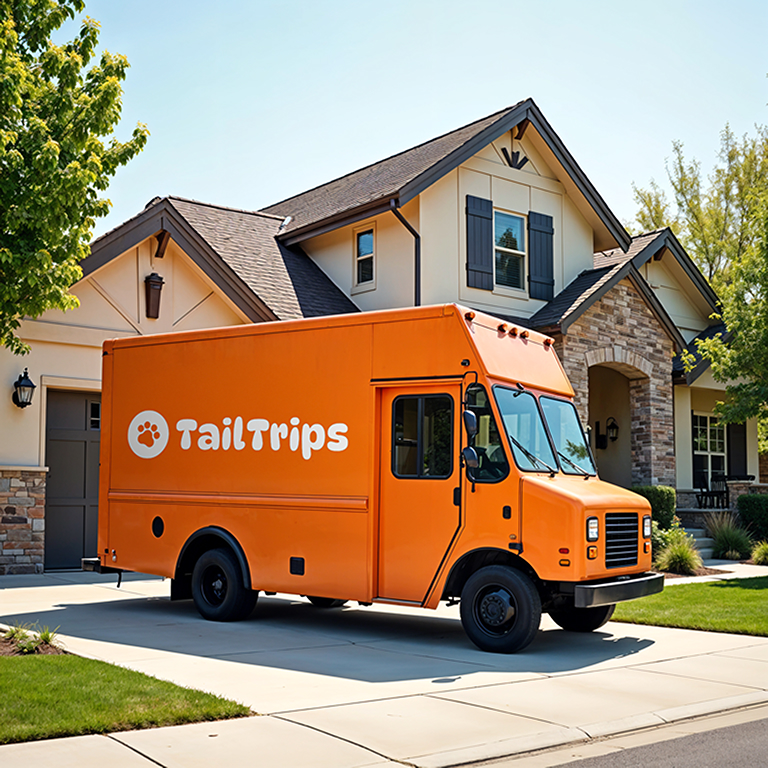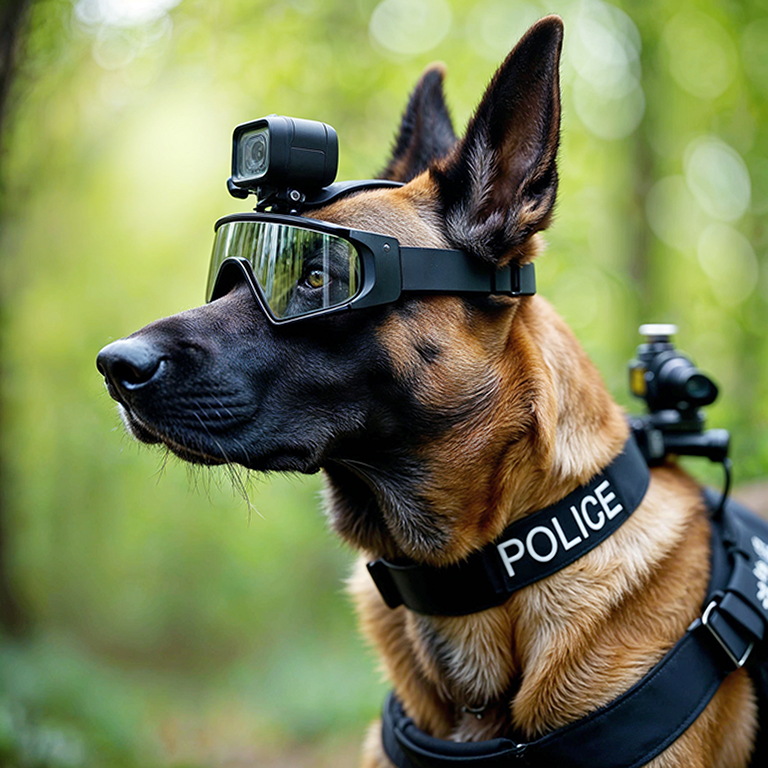Safe Puppy Transport from Breeders
First Class on Wheels – From Pups and Kittens to Exotic Companions


Get the quote in your preferred messenger: Facebook, Instagram, WhatsApp.
Entrust the transportation of your animal to us. Make their journey comfortable and safe

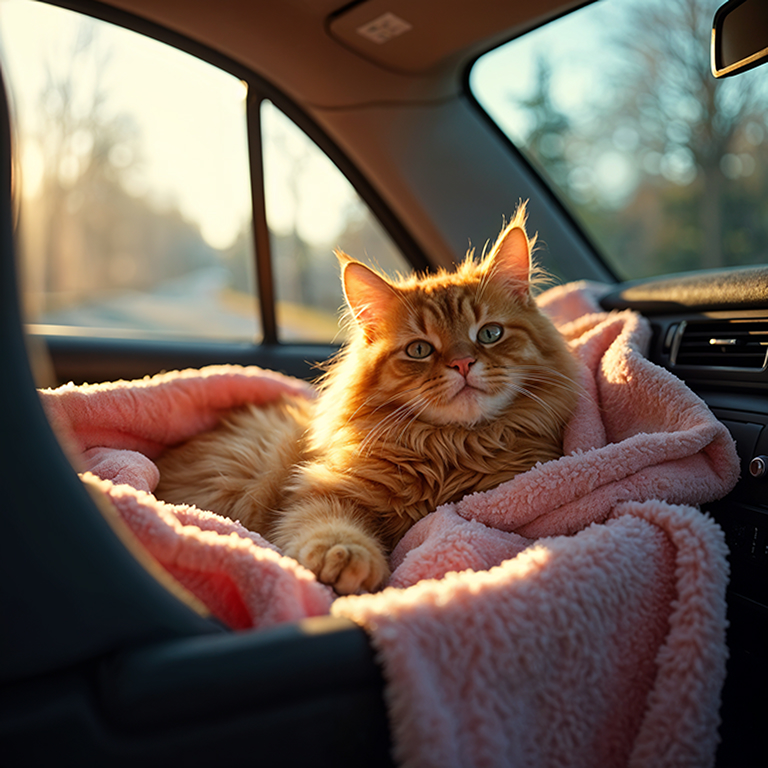
Your pet’s safety is our top priority. We ensure every journey is stress-free and safe with well-trained drivers and protective transport measures.
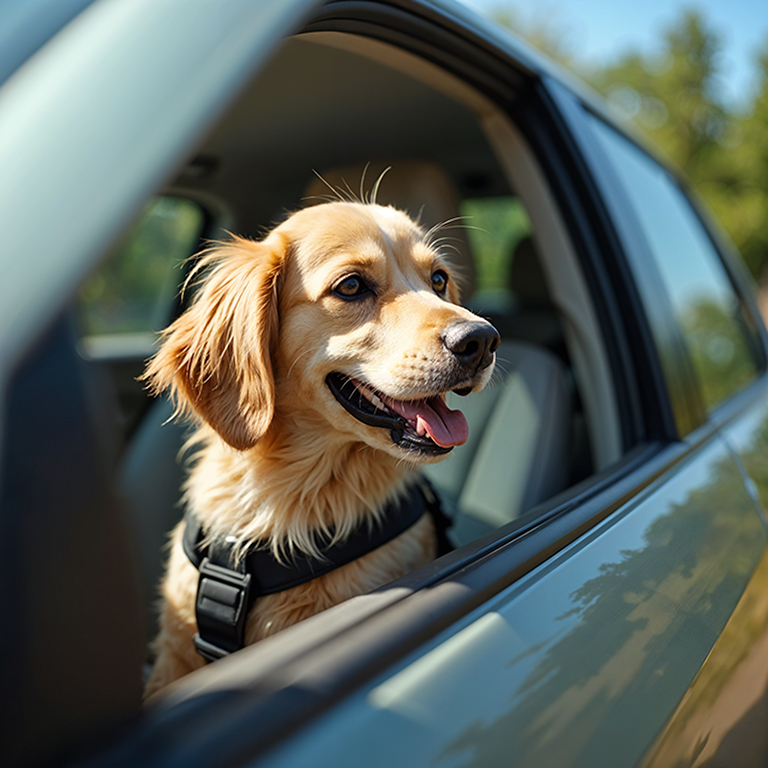
We provide climate-controlled vehicles and frequent rest stops to keep your pet relaxed and comfortable throughout the journey.
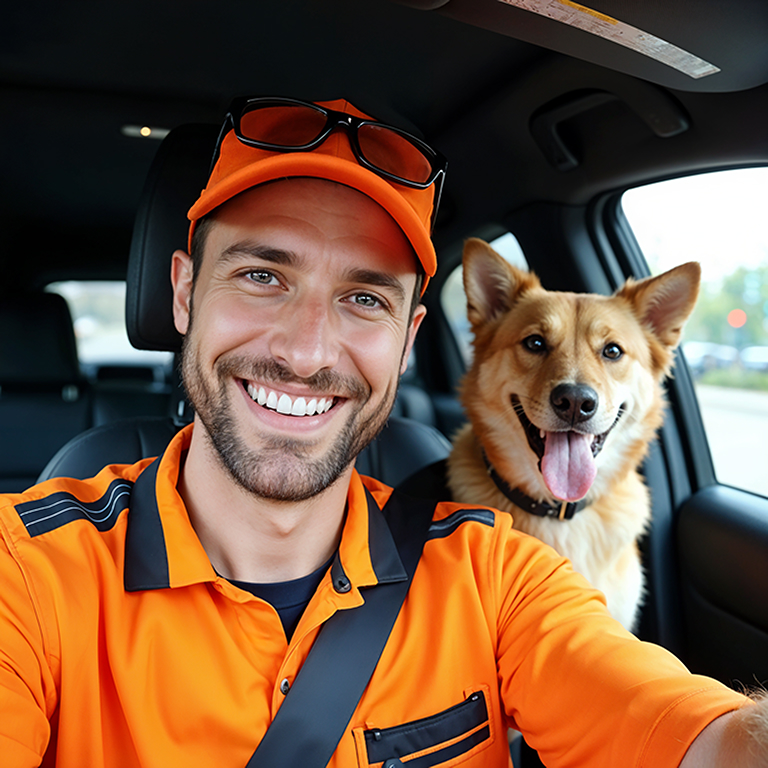
Our drivers are animal lovers who treat every pet with care and compassion, ensuring your furry friend feels safe and loved along the way.
All our pet taxi drivers are pre-screened, ID-verified, and have undergone comprehensive background checks. For added peace of mind, we provide a $1000 Pet Protection Plan along with 24/7 access to televet services.
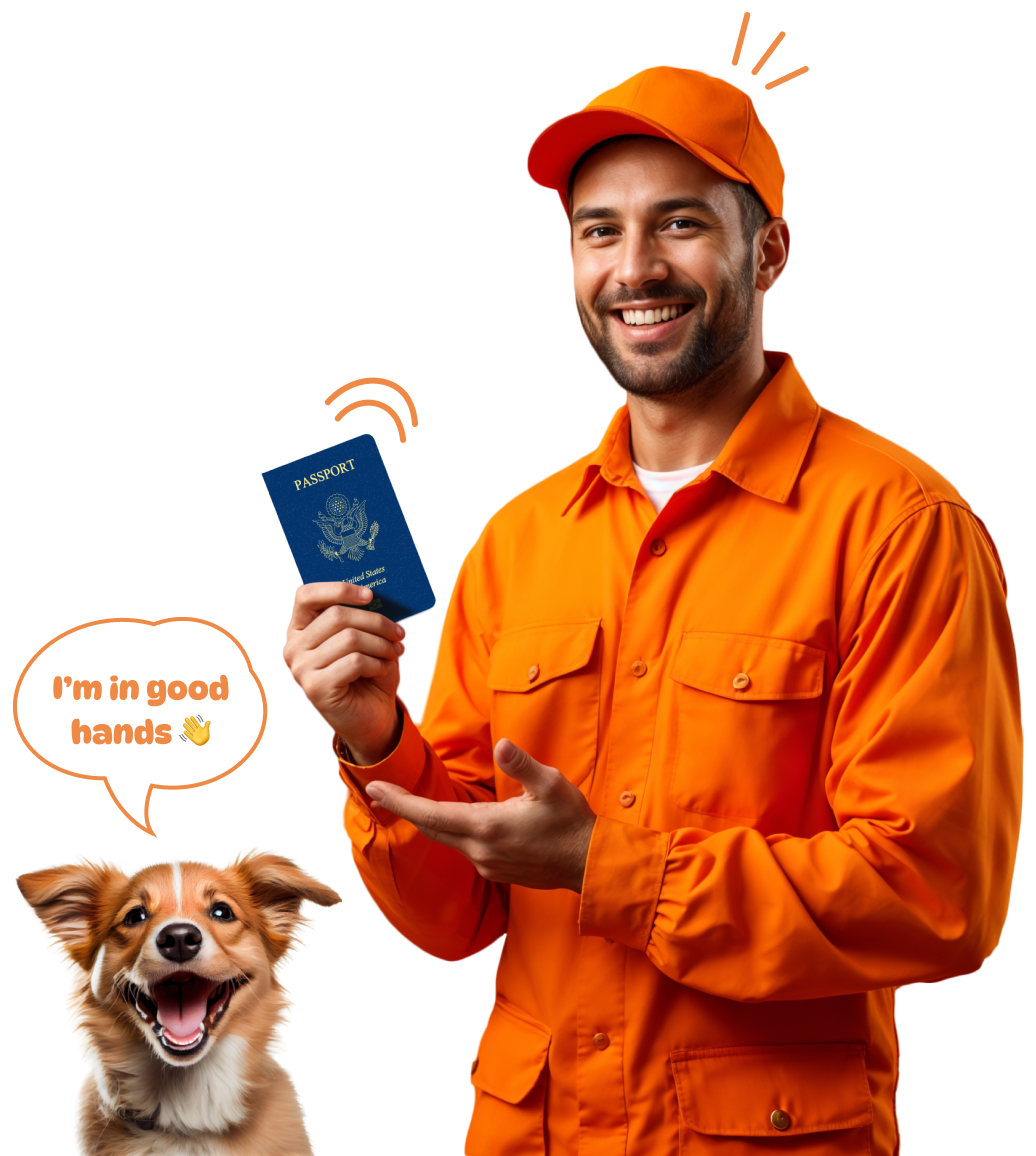
TailTrips provides safe and reliable pet transportation with pet taxi across the U.S. Trust us to transport your furry family members safely!
Discover all the states where TailTrips provides safe and reliable pet taxi services for your furry companions.
TailTrips specializes in corporate pet relocation, ensuring a smooth and stress-free transition for your furry companions during your move.
The main thing to consider is that a pet, regardless of size, should not interfere with the driver or other passengers during the entire trip. This nuance especially concerns the driver because the lives of all road users depend on their vigilance and careful driving.
For effective transportation, additional accessories and devices may be required, which can be purchased at pet stores, specialized online stores, and even local mega-markets.
Let’s start with the general rules for all mammalian animals (dogs, cats, etc.).
Rules for Delivering Animals from Kennels
- You cannot place the animal on the front passenger seat; it will interfere with the driver. It is only allowed with the use of a special car leash of a certain length and fixation.
- There must be its own designated place. If the size of the trunk or back seat allows, place a container, seat, hammock, or animal cover there.
- For frequent transportation of large animals in the luggage compartment or on the back seat without a leash, the installation of a protective barrier net will be required so that it does not get into the passenger compartment or onto the front seats.
- It is strictly forbidden to open windows while driving in a car with pets. With a draft, the probability of the pet catching a cold is very high, so why risk its health?
- The temperature in the cabin should not exceed 68–72 degrees Fahrenheit (20–22 degrees Celsius). Climate control and air conditioning will help ensure such a comfortable range.
- All doors must be locked before starting to drive.
- During long journeys, make stops as often as possible. You can rest and have a snack yourself, and at the same time, walk your pet, give it water, and it will be able to relieve itself comfortably.
- Do not take animals with you if you plan to leave them in the car alone for a long time. In summer, they risk overheating from the heat, especially if the car is parked in the sun, and in winte,r they can freeze in an unheated cabin. Either take them with you or leave them at home.
- The muzzle should be removed in the car, especially for dogs, because their thermoregulation occurs through their mouths.
- Cats and small rodents are best transported in carriers with a secure lock. Fortunately, their size allows them to be placed on the front seat next to you, and you can interact with the animal if necessary.
How to Prepare for Transporting an Animal from a Breeder
The sooner you start preparing your pet for future transportation, the calmer and more trouble-free everything will go. It is worth taking care of covers, mats, and other devices in advance. In addition, it is best to gradually accustom your pet to being in the car and to proper behavior from a young age. Even if the animal is already an adult and this is its first trip, it is worth rehearsing. Start the car with it inside for a while, drive small circles near the house, etc.
What else do you need to know?
- The carrier must correspond to the size of the pet. To do this, you can bring the animal to a pet store, try it on there, or ask for help from the store’s consultants. Veterinarians can also give similar recommendations for choosing a carrier. The door to the carrier must be securely fastened, and good ventilation is also necessary. For the first introduction to the device, it is enough to lure the pet inside with, for example, a favorite toy or treat. You can leave the carrier in the house for a while and let the animal get used to it.
- If the animal is hostile to transportation and this is its first car trip, it is better not to go to the veterinary clinic. In the future, the pet will associate its fear and stress with visiting the vet. This will cause a lot of problems and will forever discourage the furry friend from trusting the specialist.
- Time is also needed to get used to the vehicle, its smells, and its details. You cannot start a long journey right away; the pet may get carsick or be too restless. It is advisable to give the animal a treat or pet it at the end of each session.
- Allow the pet to sniff and touch everything thoroughly. Do not shout or make sudden movements, and do not rush.
- Immediately start teaching it to get in and out through the open doors strictly on command.
- Do not allow it in the driver’s seat. If necessary, say the required command firmly and gesture to show it to get down.
- Forcibly stuffing a frightened animal is not worth it; patience and a favorite treat will work faster than scolding and hitting.
- You should not give the pet water or food approximately two hours before the trip. If, after numerous trips, it is found that the animal does not have problems with motion sickness, this restriction can be safely lifted.
- Not all large animals are suitable for restraints and tight bags, and even small ones do not really like closed and dark spaces, so it is better to buy pet transport covers or barrier nets.
Conclusion
The transportation process requires a serious and thorough approach. The animal should not only get used to the carrier, cage, covers, and the car itself but also to being in it while moving. Moreover, habituation should be gradual and precisely calculated; otherwise, there is a chance of making the animal afraid of the vehicle once and for all and even causing stress at the mere sight of a car.
The most important thing is to prevent the pet from moving freely around the cabin; any interference with the driver can provoke an accident on busy city streets. Passengers will also find it unpleasant and uncomfortable. Secure the pet in the back seat or in the trunk, away from the front seats.
Bags with mesh for observing the outside world and seats are ideal for small animals, while boxes and ventilated transport containers are suitable for larger ones. The largest are placed in the trunk and usually secured with a car leash. If possible, cover the seats with covers for such needs, which will protect the upholstery and other surfaces from traces of claws, fur, and saliva.
IMPORTANT! Do not leave your pet unattended in the car for a long time. Create a comfortable temperature for it and be sure to take walks during long journeys. Always bring clean drinking water and give it to your pet often.
Here you’ll find clear and concise answers to the most common questions about our pet taxi services.
How do breeders ship puppies with TailTrips?
Breeders trust TailTrips because we simplify the process. Here's how breeders ship puppies with us: provide the puppy's details, receive offers from our vetted drivers, and book a climate-controlled trip—ensuring the puppy arrives safely at their new home.
How to transport a puppy from breeder safely across the USA?
How to transport a puppy from breeder safely is simple with TailTrips. We use climate-controlled vehicles, pre-screened drivers who love animals, and offer regular updates so you know your puppy is secure and comfortable every step of the way.
What’s the best way for picking up a puppy from the breeder over a long distance?
Instead of picking up a puppy from the breeder yourself with a long drive, TailTrips offers a stress-free solution. Our professional drivers handle the journey, providing cozy rides with frequent stops, so your puppy arrives happy and healthy without you hitting the road.
With thousands of successful deliveries and top ratings from customers, Tail Trips is the trusted choice for safe and reliable pet transportation across the nation. Get Started with Tail Trips pet taxi Today!

